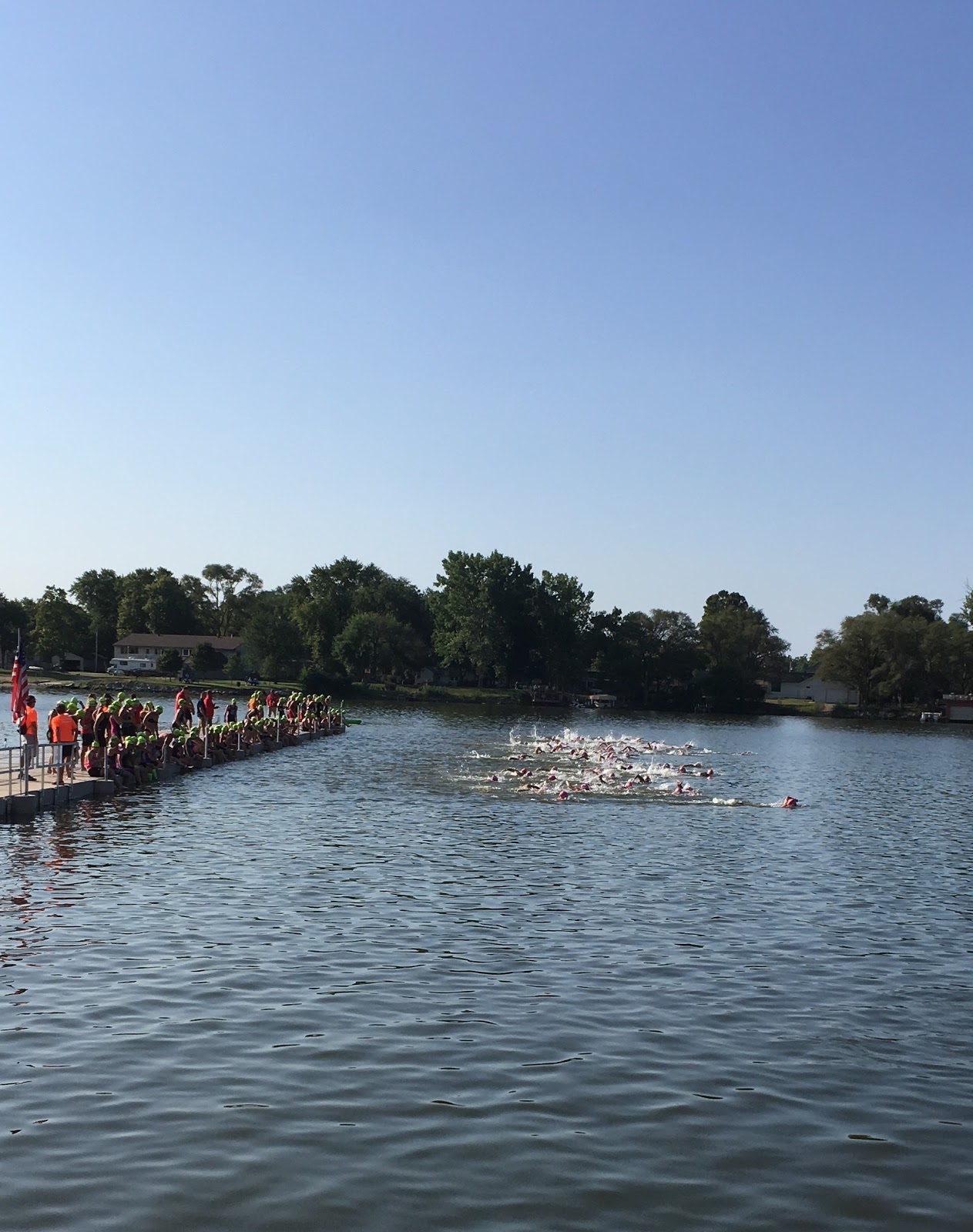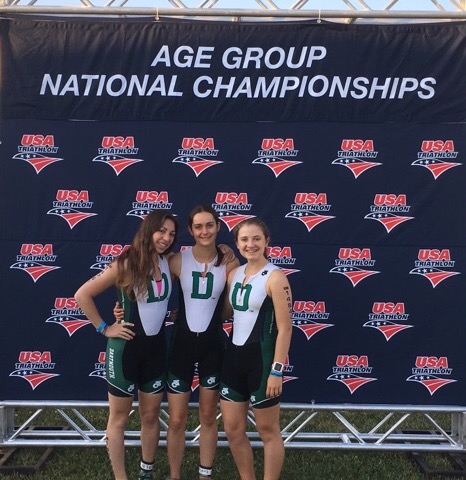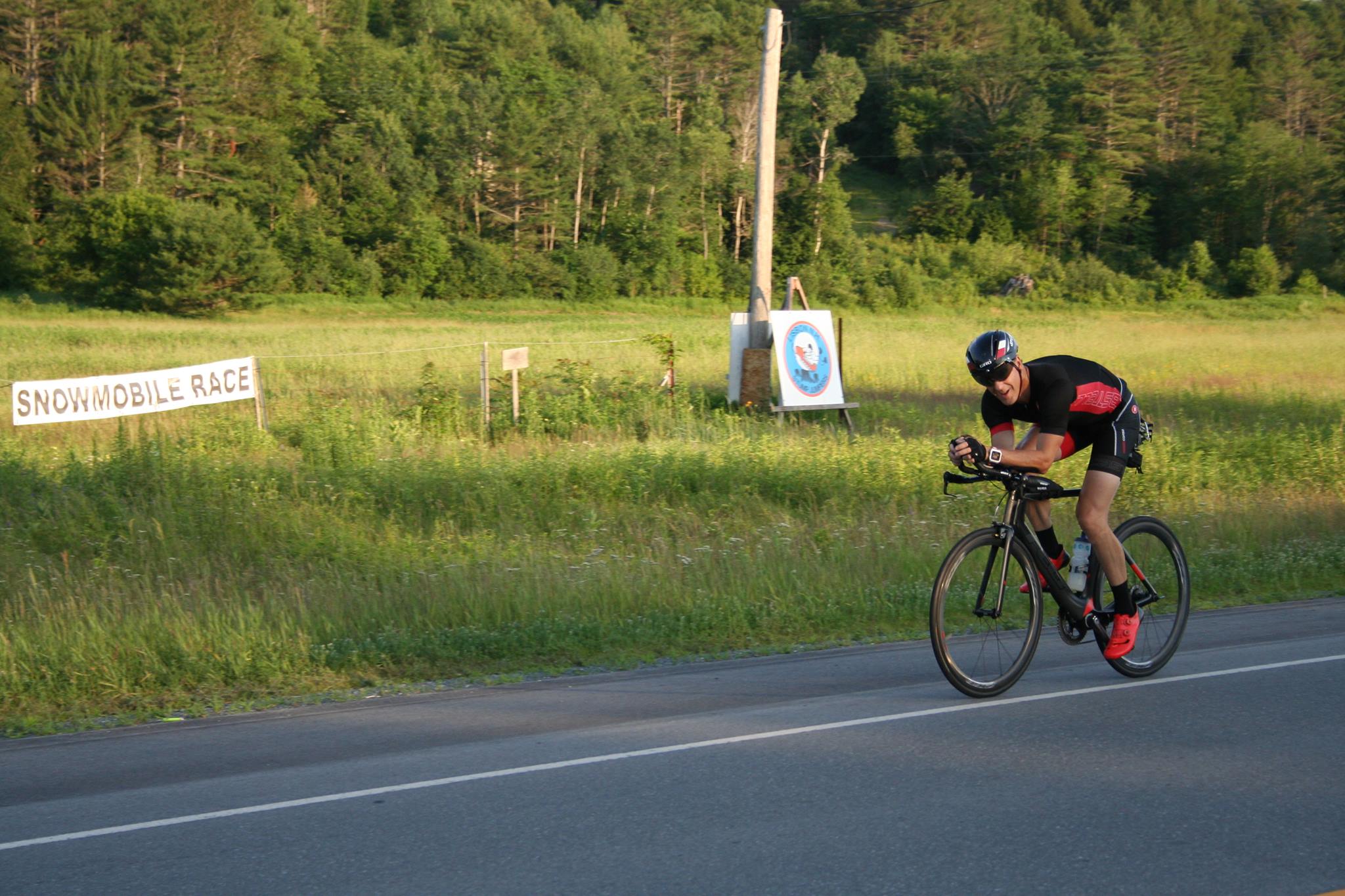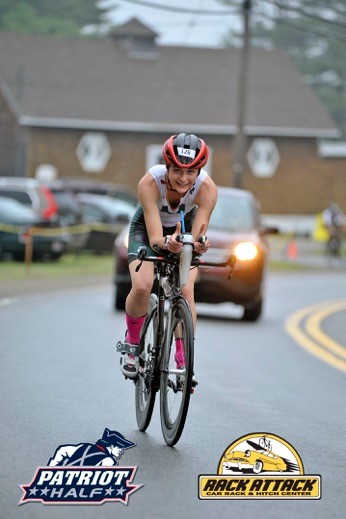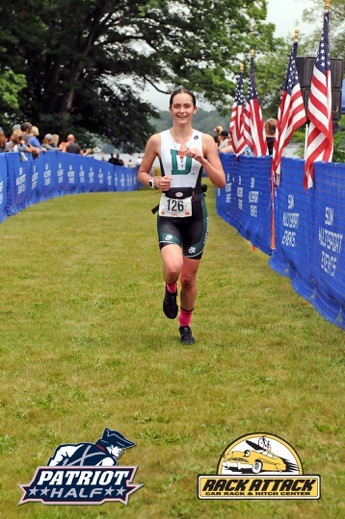It was 8:55am in Omaha, and we were sitting hip-to-hip with our competitors, our legs dangling over the edge of the dock. After months of anticipation and training, Katie, Sonia and I finally had our toes in the race. We were smiling and laughing with the girls around us, though they would soon become our fiercest competitors when our wave took off minutes later. That’s just the magic of this crazy sport: when you’ve traveled halfway across the country to push your body through a two-and-a-half-hour, three-sport sprint, you just can’t take it too seriously.
After five long minutes, the buzzer went off and the swim began. The water temperature was 80 degrees on race morning, so it was declared a non wetsuit race. This meant slightly slower swim times without the flotation power of a wetsuit, but it also meant we would shave time from our transitions since we wouldn’t need to rip off our wetsuits or change clothes at all. Besides the lack of lane lines, the lake swim almost felt like a pool.
While the swim looks peaceful to fans on the docks, in the water it’s a battlefield. Remember that pool game “sharks and minnows,” where the shark grabs as many legs as she can while the other kids scramble to cross the pool? The swim leg of a triathlon is just like that game, except everyone is a shark and it lasts for a mile. I fought my way to the first buoy, and Sonia got stuck between two swimmers, claiming that at one point she “rode on their backs” as she found herself in their line of motion. We circled the buoys to complete the mile, Sonia and I coming in at 27 minutes with Katie close behind.
Sonia and I ran to transition together and cheered each other on. Soon, we were running with our bikes to the bike mount line. Sonia started just ahead of me and Katie, quick as a whip, passed me within the first couple miles. The bike is my worst leg of the triathlon by far, so my goal was just to hang on to a 20 mph pace and try to hold my position for as long as possible. I was only successful until the turnaround – when my lack of speed work caught up to me –, but I still finished the bike leg in my goal of an hour twenty. Katie and Sonia finished the bike leg in 1:10 and 1:14, and I cheered them on the start of the run as I sprinted to transition.
By the time I got to T2, it was almost 11 and already 80 degrees. It was hot, and you could see it on the red faces of all of the runners. I followed Sonia’s advice and dumped a cup of water on my head at each aid station. At one, the volunteer handed me the paper cup and called out “wait, that’s a block of ice!” as I ran away, but I’d already poured it, the ice melting on my head. It felt great.
My run was a blurry mix of bliss and pain, and I couldn’t help but smile. There we were in the middle of Nebraska, running down country roads with some of the best amateur triathletes in the nation – and they were all just as excited to be there as we were. I crossed the finish line six minutes ahead of my goal time with Katie, Sonia, Jeff and my dad all waiting at the end. Katie had finished in 2:26:53, coming in an incredible 7th in our age group. Sonia finished in 2:32, coming in 16th. I came in at 2:39, finishing 25th.
That night at the awards ceremony, Katie took to the podium, standing with the top finishers in our age group. She also found out that all three of us had qualified for Worlds in 2018 in Australia. The next morning, Coach Jeff had an amazing race in the Sprint, coming in hot at 1:13:51 and finishing 7th in his age group. Talk about a coach that can do both! Jeff guided us through our race-day prep and cheered us on throughout the race, only to wake up and absolutely crush his own race the next day.
Two years ago, I raced Nationals in my Dartmouth kit, but I competed mostly for myself. I could’ve never imagined how far our team has come since then. At the finish line, we met an alum, Gabriel, who was racing, too. Maybe that’s why I never stopped hearing “Go Big Green” throughout the race, both from strangers and friends. It propelled us forward, pushed us to dig even deeper and put smiles on our faces in the toughest (and hottest) moments. I think it’s safe to say that Dartmouth made a splash at Nationals this year.
Now for a few huge thank yous: First, dad – you’re the best cheerleader in the game (thank you for flying to (the most exotic) midwestern cities with me)! Jeff – you are a saint for driving to Omaha by yourself with our bikes so that we could have the perfect race set up. I’m not sure how we will ever repay you! Jim – this summer, when the devil on my shoulder told me to stay out on a Friday night and skip a Saturday double-day, I’d remember the joy of the TrainingPeaks box turning green and knowing you’d see me kicking butt in my workout and the devil would pipe down. Thank you for thoughtfully writing training plans that made all three of us fit and confident for race day! - Emma Sklarin, Dartmouth Triathlon Club & Endurance Drive U23 athlete



